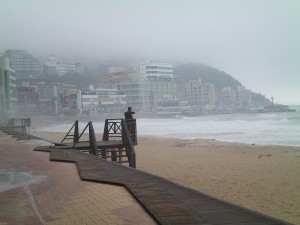Author Archive
Posted in
Uncategorized by
chimeratravel on November 1, 2013
It used to be that group travel meant being stuck in a big bus for a week with 60 other passengers that you don’t know. Not anymore! The face of group travel has changed drastically in the past few years and has become more customizable than ever.
Does your church or synagogue run group trips (or would they like to)? What about a volunteer group for an organization? Or perhaps your book club wants to visit in person the places you’ve read about? Maybe you want to trace your routes on a ancestral journey? Whatever your group or interest, there are plenty of travel opportunities. We can even help you get together a group or travelers with similar hobbies or interests. Some potential groups you might consider include:
- Literary travel: whether you’re part of an official book club or just a big fan or a certain author, genre, or time period, literary travel is becoming increasingly popular. Visit the homes, workshops, and watering holes of your favorite writers, or take a tour of destinations featured in some of your most prized works. These types of tours are particularly popular in places like England, Scotland, Ireland, and Paris, but a customized trip to could be created to just about any destination for your group.
- Historical tours: historical societies, history buffs, and even school groups can create a tour around a particular event or time period in history. Perhaps it’s World War II sites, or Tudor England you wish to see exprience, for instance. Whatever the historical interest, there’s no better way to learn about or honor it than visiting the destinations first hand.
- Volunteer tours: The possibilities here are vast. Volunteer groups can do everything from help towns rebuild after a natural disaster to get involved at wildlife preserves in Africa. ?You could be part of a larger project – for instance Habitat For Humanity – or create your own volunteer project for something that has special meaning to you. These may be done in coordination with another organization, for such as a church or synagogue, or could be a self-created group. We can even help you gather volunteers by creating and promoting a program.
- Gastronomy and culinary tours: Food and drink has long been associated with travel and cultural experiences. Be it cooking classes, wine tasting, a whiskey-themed tour, or another type of gastronomical delight, it’s often difficult to ignore the roll that food and drink plays in travel, and the pull it gives different destinations. Groups from culinary schools to dinner clubs to people who simply share the love of a good glass of wine or pint of beer are traveling around the world to experience the way other cultures do food and drink.
- Genealogy tours: These can be great for heritage societies, family groups, or just those from a certain region that want to explore their past. Some tour companies focus exclusively on this type of travel, and if a tour to your chosen destination(s) does not already exist, we can help create one for you.
- Garden tours: While tulip tours (and river cruises) are the most famous garden type tour, these are growing in popularity throughout Europe and the world.
- Music and art tours: visit the homes of your favorite musicians and artists, attend the symphony or enjoy a private tour through your favorite museums. Trips can be created for everyone from professionals in the fields to school or university groups, to those who simply have a love of art or music.
These are just a few examples of group tour options. We can help your group create a trip around your particular shared interest or activity. If you have a group that would like to travel, but you aren’t sure which type of trip you’d like, that’s ?fine too – we’ll work with you to determine the destination(s) and activities that best fit the needs and interests of your group.
Posted in
Uncategorized by
chimeratravel on November 1, 2013
Multigenerational travel is becoming more popular than ever. Hotels, tour companies, and cruise ships are gearing up their focus on families, offering amenities and activities that cater to every age range, from great grand parents to young children and everyone in between. With all of these options, why not hold your next family celebration or reunion in a favorite or dream destination? ?Here are some of our top suggestions for multigenerational getaways.
- Villa rentals: Villa rentals can be found everywhere from the Caribbean to Hawaii to Tuscany. They provide the perfect place to gather family members of all ages, and give you the freedom to cater to everyone’s sleeping and dining preferences. They also may be more affordable than booking numerous hotel rooms.
- Dude ranch: These can range from rustic to luxurious and are ideal for families. They offer activities for people of all ages, and certainly offer a different experience from the average vacation. They’re best for those who like a bit of activity, but you certainly don’t have to be an elite athletes. Some even offer spa services for those who prefer relaxation and a bit of pampering. Many of the packages include meals and some activities, so they offer a good value for your group.
- Safari: Safaris come in all shapes and sizes these days – everything from tented safaris to luxury camps to five-star lodges. They can be experienced on foot, by off-road vehicle, by boat, or even by hot air balloon. While I wouldn’t suggest this for families with very young children – infants or toddlers – it truly can be a multigenerational experience. Some safaris will have age requirements or activity level suggestions so it’s important to check these before booking your trip.
- Cruises: Cruises have become increasingly focused on the family. They offer options from fine dining to rock climbing to dance classes and everything in between. They allow everyone to stay in one place while each having a day to day experience that meets their interests. Cruises are not for everyone, and it’s important to find the cruise ship and itinerary that best fits your family, but for the right group, they can be the perfect family vacation.
- Genealogy trips: What a better way to celebrate the family then to explore your heritage? While some may think of trips to discover ones ancestry as something for the older generations, they can offer a great opportunity for the whole family. Kids have the chance to not only learn about their family, but experience the places of their history first hand – from big cities to small villages where their ancestors worked and lived. After all, these children will be the ones to carry on the family history, so why not let them immerse themselves in it from an early age?
- National Parks: If you’re looking for a domestic location, the US national parks offer a great variety of sites and activities that appeal to virtually. You can make a particular park the center point of your vacation, or take a road trip between several parks.
The key to a family vacation is finding a destination that offers options both interesting and feasible for all family members going. This includes knowing the age limits for entrance to various sites and attractions (if any) as well as the activity level required. If there are family members who have trouble getting around, you want to chose a destination whose activities and sites don’t all involve walking for hours a day. The same is true of young children. Choosing the perfect destination for your family can take a bit of time and some careful consideration, but we will work with your group to make sure that the vacation you choose has something for everyone.
Posted in
Uncategorized by
chimeratravel on November 1, 2013
When people think of planning travel, it probably conjures up images of foreign cities or white sand beaches with their friends or loved ones. But not all travel is for fun and leisure.
Many jobs require travel for client meetings, seminars, conferences, events and more. We’d love to help you with those too! Here are some of the travel options that we can arrange for you and your company:
- Flights, hotels, rental cars, and airport transfers (group and private) for employees.
- Pre and post travel for meetings, conferences, and events. This can include either business travel – for instance a team meeting or team-building for employees – or ?individual leisure travel at the destination before or after the event. ?This could include everything from theater tickets or a night tour on an evening when you don’t have event obligations, to day trips or a week long exploration in your destination.
- Inbound travel for a meeting your company is hosting. If you have clients or off-site employees coming into town for an event, we can arrange their flights, accommodations, transportation, and anything else you need.
- Off site meetings for your team. We can help you arrange the entire meeting at your destination – everything from securing the meeting space to setting up group dinners 0r networking event, plus all of the travel and accommodations required for your trip.
- Inbound travel for presenters and vendors coming into town for a meeting or event that you are hosting.
These are just a few of the examples of how we can help your company with travel. We work with each company individually to cater to their specific needs for each trip or event. ?Have a business travel need not on the list? Contact us by phone at 856-266-8898 or email us at maya@chimera-travel.com to learn more about how we can work with you and your company.
I’ve been back from the Middle East for close to four weeks now. Yet at least a few times a week, as I’m walking around the city, I swear I hear the Islamic call to prayer somewhere in the distant background. It’s more likely music playing a ways off that I can’t distinguish, or something of the like. But it catches me, and just for a second I pause and strain to hear.
For those who don’t know, I live in Philadelphia. If we have more than one mosque here, it’s a lot (I do believe I’ve seen one). We’re a relatively diverse city, we just don’t have a lot of mosques. So I’m quite sure that the noise I’m hearing is not actually the call to prayer. Especially because I’d never heard it before going on my trip. But while I was in the Middle East, I was absolutely awed by the call. At first, I was intrigued. As I mentioned, I’d never heard it. Now I’ll be fully honest – as a newbie to the region, I kind of pictured everyone stopping in their tracks and praying five times a day. Pardon the ignorance on that one. It had never been to the Middle East and the only people I’d known that had been hadn’t been very recently.
I hadn’t made it out of the Dubai airport when I heard the first call to prayer. It was the later evening one, the last of the night. It was faint, tough to hear over all the clanging of the luggage and voices of excited tourists, but it was beautiful.
In Dubai, I had to actively listen to hear the call, and even then it was difficult. The area in which we stayed was the newer section, filled with construction in lieu of mosques. I didn’t plan it that way; it was the pre-assigned conference hotel. I was disappointed. The bit I’d heard in the airport had piqued my interest to learn more not only about the call itself, but the whole prayer process.
In Jordan, I got to hear the call a little more, but not much. We were out in the deserts much of the time, so once again not in good hearing distance of the minarets. I did learn a bit more, though. I learned that the call is five times a day. It is based on sunrise and sunset, so it can change throughout the year. I also learned that Muslims do not actually have to stop everything they are doing, grab a prayer rug, and pray the minute that they hear the call. Our guide told us that he can “save” his prayers if he’s in the middle of guiding, and pray more when he gets home. Further more, he does not have to pray in a mosque, or any place specific. He can pray where he chooses, as long as he does pray. (For the record, I’m using “he” here because our guide was a man, but the same goes for women). I learned that there are actually two “calls” with each call – one to let people know it’s time to pray, to give them time to wash and get to a mosque if they choose, and the second, about 10 to 15 minutes later, to start the actual prayer. In addition, the imams no longer have to climb up to the top of the minaret. They now stand at the bottom with a microphone, and it’s projected over the city from speakers at the top. I guess even this age-old tradition has had to adjust to the times a bit. It doesn’t matter though, at least not to me.
As our trip progressed, I continued to listen for the call, and each time I heard it, I grew enthralled. By the time we made it to Istanbul, where mosques and minarets are almost literally on every corner, I was completely enchanted. I couldn’t understand how people could not stop in their tracks when they heard it. I don’t even pray and it made me wish that I did. It is such a hauntingly beautiful sound.
Back home, as I walk around the busy streets of Philly, I hear traffic, conversation, dogs barking, and even occasionally church bells ringing – which I’ll admit I also think are worth stopping to listen to. But nothing like the call to prayer. Nothing that makes a non-pray-er want to drop to their knees and pray to something, even if they don’t know what. This has nothing to do with religion for me. If you care to know, I’m an aspiring buddhist, and my form of prayer, if you’d like to call it that, is meditation. It has to do with simply the sound and mystique of the call for me. Perhaps if I heard it five times a day, every day, for my entire life, I’d be able to walk on without even noticing it like so many people in the Middle East seemed to be able to do. I guess I probably won’t ever find out unless my life suddenly, somehow, takes me abroad for an extended period of time. So for now, I hold the call to prayer in a special place, a place of reflection, awe, and respect for the fact that it can impact a person so profoundly.
If you’ve never heard the call, here’s a recording on my Chimera Travel Facebook page.
Disclaimer: The details I’ve stated about the prayer process were those related to me by our guides throughout the trip. If any are off a bit, I sincerely apologize. I did my best to relate what they told me in the most factual manner when it came to the aspects of the religious process.
Posted in
Destinations by
chimeratravel on May 1, 2013
A couple of weeks ago I took a trip to Dubai, Jordan, and Istanbul. Jordan was, hands down, my favorite. It’s a magical place with magical people and I simply fell in love with it. In our somewhat whirlwind trip, we visited Wadi Rum, Petra, Jerash, and the Dead Sea, and all were spectacular. Learning about the history of the Nabateans at Petra and walking the same streets as the Romans in Jerash was awe-inspiring. Not to mention the hysterical laughter that ensued with the dead sea mud bath. But my favorite experience was a non-touristy one, one on which I hadn’t planned on, that I can’t say most other people traveling to Jordan have had.
Most tours in Wadi Rum stop at a bedouin tent. Usually, though, it’s a tourist tent. It’s set out for visitors to come and see the bedouin lifestyle and experience a little bit of the culture. While interesting, it’s somewhat standard. Ours was different. Our bedouin guide, Mousalam, took us to the home (tent) of his aunt and uncle. It certainly wasn’t a “canned” stop. They had migrated recently, and he couldn’t even find the tent at first so we had to drive around for a few minutes. There were no trinkets for sale, no other cars parked out front. We were instructed not to take photos of any kind – the women particularly do not like having that kind of attention.
We wandered into the tent, probably about 6 x 8 feet total. It was the “men’s side.” When there is company (or at least bedouin company) the men and women do not sit together. They made an exception for us, but they did not come in. Mousalam’s aunt was in the women’s tent brewing tea, and he acted as the go between, getting the tea from her and asking her a couple of basic questions that we had about the tent and general bedouin living (for instance, we learned that our “men’s tent” slept about six to eight people). The tea was delicious, piping hot, and very sweet. As we talked to Mousalam about their lifestyle, he told us about his daughter was currently staying with the aunt and uncle here. We hadn’t seen her yet, but as two camels that did not belong to the family wandered up, she ran out – from the women’s tent I’m assuming – and shoed them away.
We did tip them a slight amount. While it wasn’t expected, we had come to their home and drank their tea, and we felt it appropriate. But it wasn’t part of the plan. They didn’t bring us there for the money or to purchase anything (indeed, there was nothing to purchase), but to immerse into the true bedouin lifestyle, and through his family no less. I can now say that I have had tea in an authentic bedouin tent in the middle of Wadi Rum. That’s pretty cool.
I obviously do not have any pictures to share, but I’ve added a few pictures of Wadi Rum itself below. I hope you find it as breathtaking as I did.
Posted in
Destinations by
chimeratravel on March 4, 2013
Today feels like a good day for some trivia fun. And some travel photos. How well do you know you’re international destinations? Take a look at these photos and clues, and see how you score!

1. This country’s National Orchid Garden is the largest orchid garden in the world.

2. This city’s seaport port is the fifth busiest in the world.

3. This country’s Karst region is filled with over 8,000 sinkholes, and visitors can take guided train and walking tours through it’s limestone caves.

4. In the late fall and winter months, this country has flooded so much that people have actually gone swimming in the square above.

5. The floating market near this city gained fame in a James Bond movie.
Posted in
Travel thoughts by
chimeratravel on January 28, 2013
With Valentines Day quickly approaching, it seems like everything is about couples. Those who aren’t part of one seem either deflated or independently proud of not celebrating the “hallmark holiday” (their words, not mine). I’ve heard similar sentiments when it comes to travel. Most people tend want a travel partner, even if it’s not a romantic partner, for lack of a better phrase. But then there are those proud solo travelers who prefer to go it alone. With so much couple-ness in the air at the moment, I wanted to honor those adventurous spirits with a blog on the positives of solo travel. Don’t worry couples – you’ll get your own blog. For now though, a six reasons to travel on your own:
1. Freedom and autonomy. You decide the destination, the itinerary, the pace of the trip based your preferences and yours alone.
2. Spontaneity. While it’s certainly not impossible to be spontaneous when traveling with others, you can’t just randomly wander off in whatever direction interests you without letting the other person know – or at least not without worrying them quite a bit!
3. You make new friends. Two of my closest friends I met traveling solo. One friendship started with a chat while waiting in line to board a flight, the other while waiting to be picked up for a tour. In both cases we just started up a conversation because, quite simply, there was nothing else to do and the other person seemed friendly. Had I been with a significant other, or anyone else for that matter, chances are I would have been chatting with them instead and not met these fantastic people who I’m quite certain are lifelong friends.
4. You learn about yourself. When you travel alone, you learn what you can handle, and what you can’t. Often times, you realize you can handle more than you think you can – because you don’t have a choice. If something goes wrong, you have to take care of it, so you do.
5. It’s a confidence boost. Similar to the above point, there’s something about managing a whole trip on your own that inspires a feeling of accomplishment. Perhaps you’ve navigated a country where you don’t speak the language and can’t recognize some of the food, and you’ve done it on your own. Thinking back to my solo travels in my late teens and early 20s, I did some things while that would cause me serious anxiety or frustration now (i.e. solo 24 hour bus ride up the coast of Australia that began at 11 PM) . But I know I could do them if I had to. There’s a lot to be said for that.
6. You tend to immerse yourself more. For some reason, when you travel alone, I feel you tend to mingle more with the locals. I don’t know why. Perhaps it’s because in some cases, that’s who you have to rely for information, restaurant recommendations, directions, etc, especially in less touristy areas.
So next time you’re looking to take a trip and can’t find a suitable travel companion, don’t throw in the towel. You may just have one of your best vacations traveling on your own.
Posted in
History,
Uncategorized by
chimeratravel on January 25, 2013
In my last post, I offered a quiz on Tudor History. Below are the answers, with enough detail to provide some insight to the life and times of this famous royal family.
1. How many wives did Henry VIII divorce?
While the traditional “rhyme” used to remember Henry VIIIs wives is “divorced, beheaded, died, divorced, beheaded, survived”, technically Henry never divorced any of his wives. He annulled marriages to Catherine of Aragon and Anne of Cleves, and also annulled the marriages to Anne Boleyn and Catherine Howard before they were beheaded. Since the marriages were considered to never have been valid, he never had to divorce any of them.
2. Which wife of Henry VIII narrowly escaped arrest and possible execution?
While given the label “survived” in the above rhyme, Katherine Parr may have had a narrow escape. The warrant for her arrest was dropped, and the person who found it brought it directly to her. She hid it from Henry, pleaded her case to him as a loyal and loving wife who in no way subscribed to heresy, and they reconciled.
3. Which wife of Henry VIII supposedly still haunts Hampton Court Palace?
Catherine Howard. When she was arrested for adultery, it was said that she was dragged to her rooms at Hampton Court Palace screaming “her head off”. Visitors to Hampton Court have reported hearing her still shrieking in the hallways.
4. Which wife of Henry VIII was added to a famous family portrait posthumously?
In a famous picture of the Royal Family depicting Henry, Jane Seymour, and young Edward, Jane Seymour was added posthumously. She’d been dead for several years when it was painted, but Henry requested that she be included. He is also buried next to her, causing some to claim that she was his most beloved wife.
5. Despite his apparent hatred for her, Henry allowed Anne Boleyn one small “allowance” for her execution. What was it?
Henry allowed Anne to be executed by sword, instead of axe (sword being the “better” way to go, if that can be said of decapitation). This also meant she was allowed to choose her executioner.
6. How did Lady Jane Grey rise to the throne?
Even though Mary and Elizabeth had been placed back into the line of succession, they had not been legitimized. As he was dying, Edward amended the succession document, writing out Mary and Elizabeth. Mary Queen of Scots, the next legitimate heir, had been written out by Henry VIII. Therefore, the succession passed to the family of Henry’s younger sister, Mary. Francis Grey, Henry VIII’s niece would have been next in line, but (for reasons only speculated about) she was passed over for her daughter Lady Jane Grey, who never really wanted to be queen.
7. How long did Mary Tudor (once Queen) wait before executing Lady Jane Grey? How old was Lady Jane when she was beheaded?
Queen Mary waited 7 months before executing Lady Jane Grey for treason, hoping to find a way to spare her life. She provided her with a priest, saying that if Lady Jane converted to Catholicism her life would be spared. Lady Jane held steadfast to her faith, and was executed at just 16 years old.
8. Which wife of Henry’s was later named as his sister?
While Henry has been reported as saying “I like her not!” upon first meeting Anne of Cleves, she agreed to be called his sister after the marriage was annulled and the two remained friends. She frequented court often to visit, play cards, and even serve as a trusted confidant of the King.
9. Why was Henry VIII so desperate to have a son?
Henry VIII’s father (Henry VII) won the crown in battle, and his claim was a bit nebulous. Henry VII was the grandson of Catherine of Voilas, who married Owen Tudor, her Master of Closet, after the death of Henry V. Rumor was that they’d had an affair, and some speculated they never actually married – which would have made Henry VII, and therefore Henry VIII, an illegitimate heir to the throne.
10. Before marriage to Henry, Lady Anne Boleyn was bestowed which title on her that was historically only given to men.
Marquess of Pembroke. She was the first woman in England to ever be given this title.
11. Why was Elizabeth I not legally a suitable Queen for either Protestants or Catholics?
Catholics believed her parent’s marriage was invalid, and therefore she was not a legitimate heir. The marriage had been annulled under Protestant Law, which also made her an illegitimate heir. Therefore, she technically should not have been queen according to either faith.
12. The Tudor dynasty produced how many Monarchs?
Five: Henry VII, Henry VIII, Edward, Mary, and Elizabeth. Technically, you could also count Lady Jane Grey, as she is a decedent of Mary Tudor, Henry’s younger sister. But she was not a direct descendent, was taken off the throne after reigning for only 9 days, and later executed for treason. James I of England (also presided as James V of Scotland) was descended from Henry VIII older sister Margaret, but his mother, Mary Queen of Scots, had long been written out of the line of succession. Therefore the Tudor dynasty is said to have produced three kings and two queens, ending with Henry’s last direct decedent, Elizabeth I.
Posted in
History by
chimeratravel on January 18, 2013
To celebrate the launch of Chimera Travel’s exclusive Tudor History Tour taking place this fall, I thought I’d put together a fun quiz about the life and times of the Tudor dynasty. While I’m trying to be as historically factual as possible, much of the goings-on during that time (including things that today seem quite important, like dates of birth for women) were passed down through history by story, written down much later, and often deduced from those things that were recorded at the time. So even with some of the most factually based information, there’s always room for a little speculation.
1. How many wives did Henry VIII divorce?
2. Which wife of Henry VIII narrowly escaped arrest and possible execution?
3. Which wife of Henry VIII supposedly still haunts Hampton Court Palace?
4. Which wife of Henry VIII was added to a famous family portrait posthumously?
5. Despite his apparent hatred for her, Henry allowed Anne Boleyn one small “allowance” for her execution. What was it?
6. How did Lady Jane Grey rise to the throne?
7. How long did Mary Tudor (once Queen) wait before executing Lady Jane Grey? How old was Lady Jane Grey when she was beheaded?
8. Which wife of Henry’s was later named as his sister?
9. Why was Henry VIII so desperate to have a son?
10. Before marriage to Henry, Lady Anne Boleyn was bestowed which title on her that was historically only given to men.
11. Why was Elizabeth I not legally a suitable Queen for either protestants or Catholics?
12. The Tudor dynasty produced how many Monarchs?
Posted in
Europe by
chimeratravel on January 14, 2013
Normally my blogs don’t focus around specific products or tours. However, I’m making an exception today, because this isn’t an external product, but an exclusive offer for Chimera Travel’s clients. I am very excited to announce that in September 2013, we will be leading our first ever small group Tudor Hisotry Tour through England in conjunction with the company Tudor History Tours on the ground in England. The tour will run September 18 – 26, 2013, and has been created exclusively for our group.
The itinerary includes:
Buckden Towers: Once home to Catherine of Aragon
Peterborough Castle: Catherine of Aragon is burried at Peterborough, as was Mary Queen of Scots until her body was exhumed and re-inturned at Westminster Abby.
Kenilworth Castle: Queen Elizabether I and Robert Dudley stayed at Kenilworth on Summer Progress
Coughton Court: Coughton was in the influential Thockmorton family for many years. Today the site contains Tudor artifacts, including the chamise that Mary Queen of Scots is said to have been exectued in.
Sudeley Castle: Family home of Katherine Parr, who burried in a church on the grounds
The Vyne: Of great importance to Henry VIIII, today The Vyne contains relics and stained class windows hear portray Catherine of Aragon and Henry VIII
Windsor: The castle here is the oldest occupied caslte in the world, and home to the current Queen
Hamtpon Court Palace: The only palace built by Henry VIII that is still standing, Hampton Court is steeped in Tudor history.
Hever Castle: Childhood home of Anne Boleyn
Pennhurst Place: Given to Anne of Cleves as part of her divorce settlement from Henry VIII
Hatfield House: Childhood home of Mary, Elizabeth, and Edward Tudor
Tower of London: Served as both a royal estate and the notorious exectution site of Anne Boleyn, Katherine Howard, and Lady Jane Grey
We are also working on possible visits to Syon House, the Globe Theatre, and Kimbolton Place – where Catherine of Aragon was forcibly taken and later died. Kimbolton is closed to the public, but Chimera Travel may be granted private access.
Space on this trip is truly limited, as we are looking to take just a small group. If you are interested or have any questions, please email me for furter details. You are welcome to pass this information on to others who may be interested!














